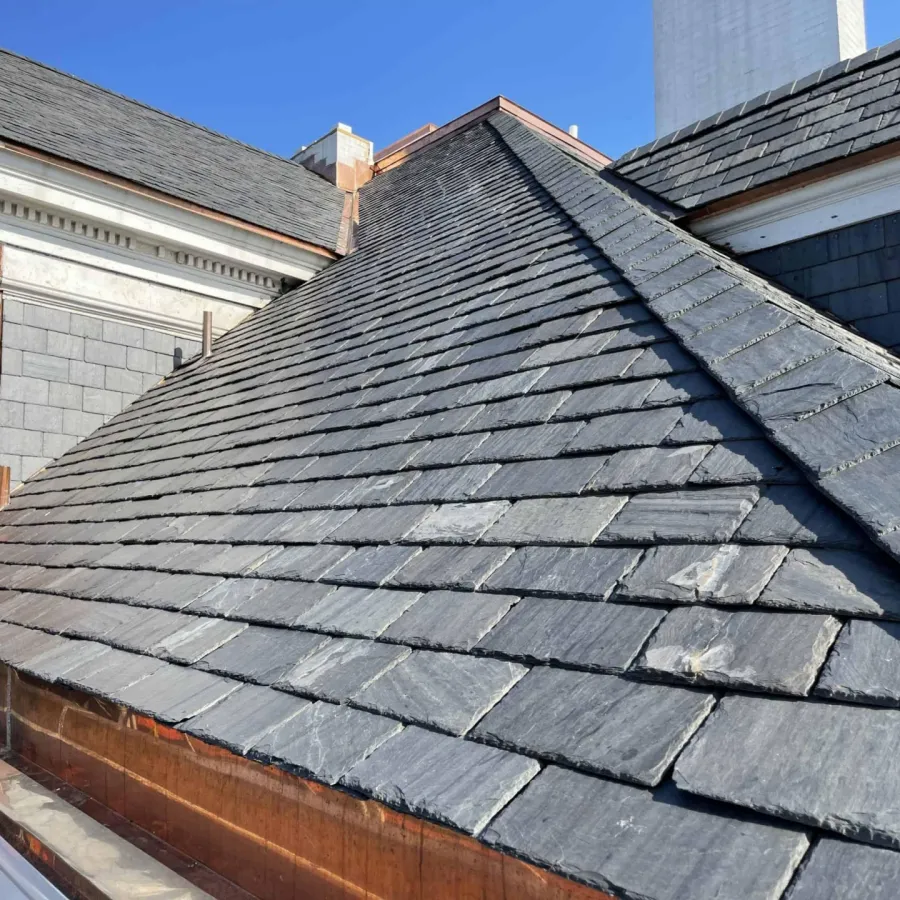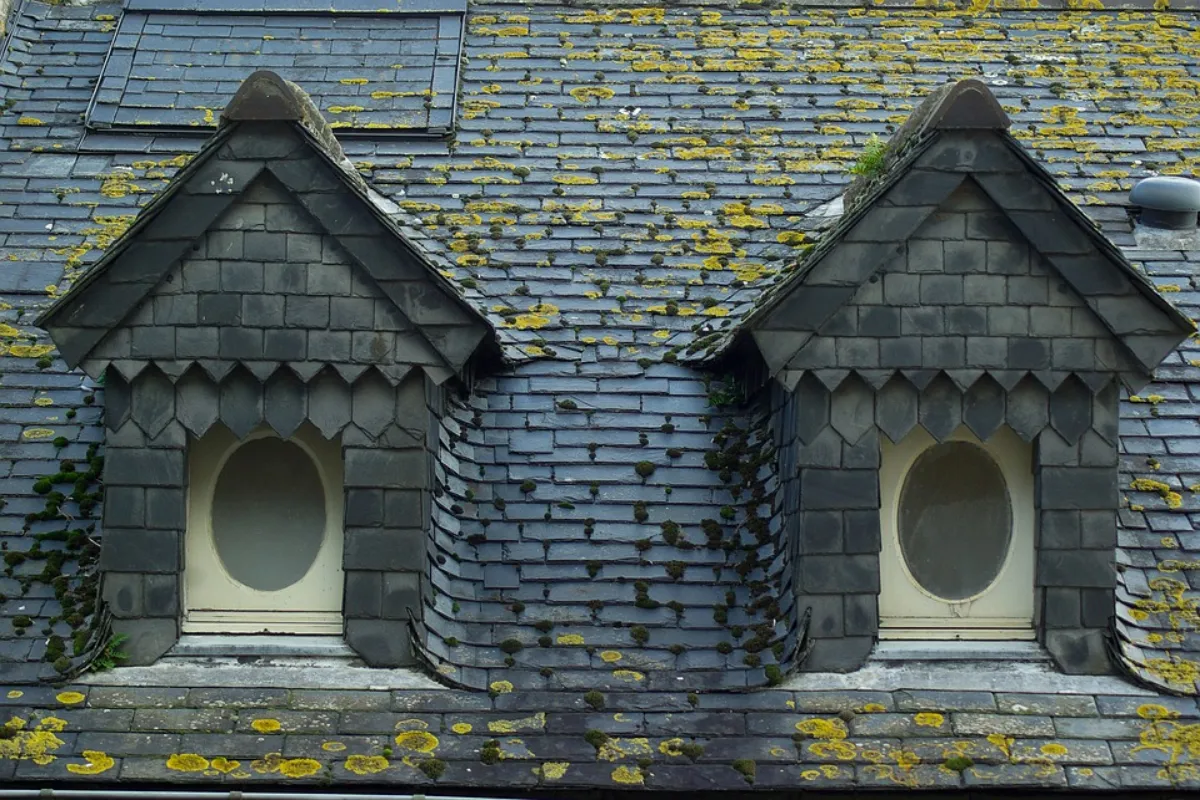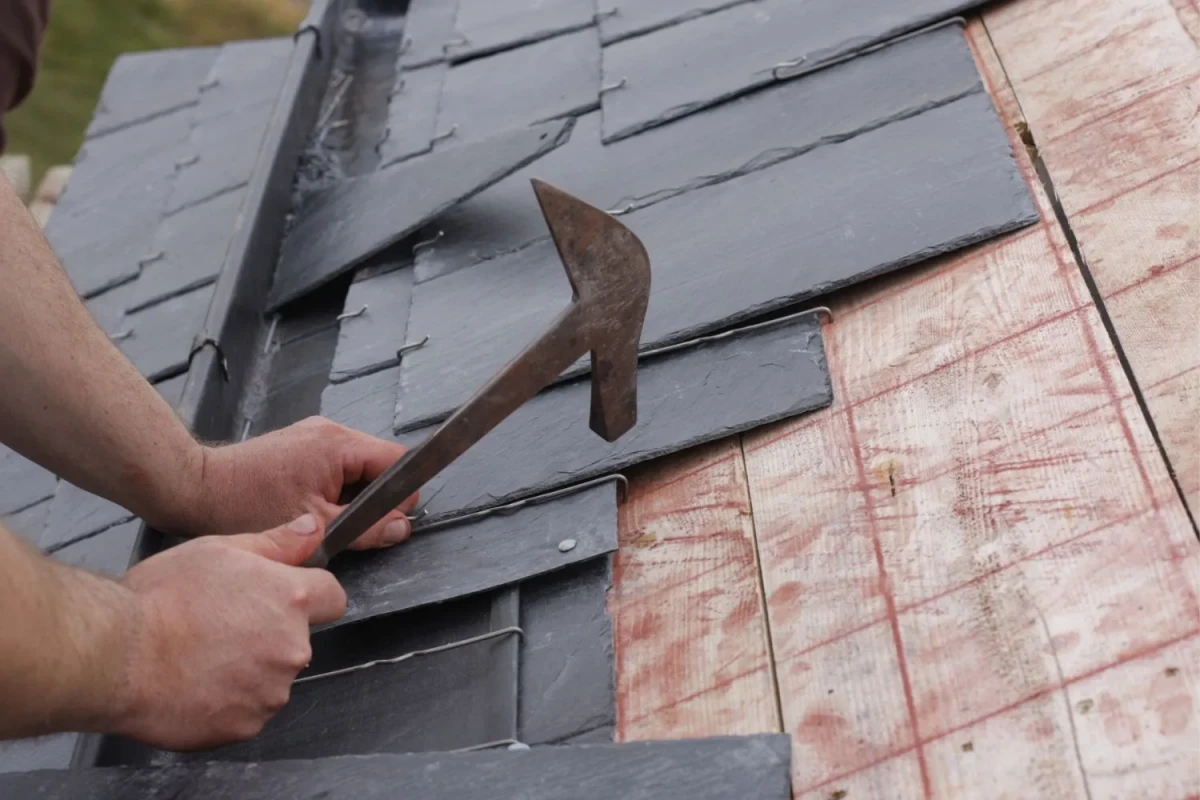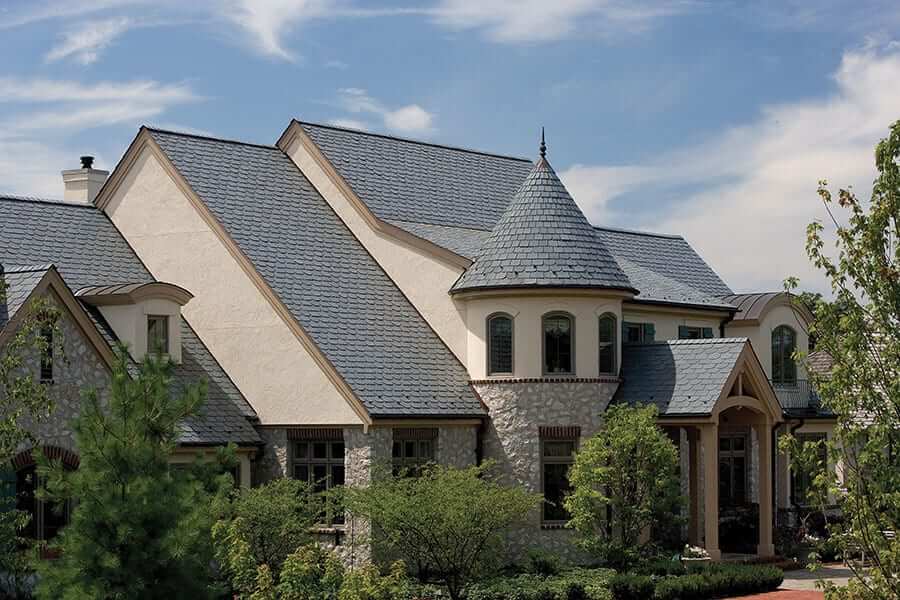The Impact of Natural Weather on Slate Roof Damage: What You Need to Know
Slate roofs are renowned for their durability and longevity, but they are not invulnerable to the forces of nature. The unforgiving impacts of natural weather can gradually take a toll on even the sturdiest slate roofing.
1. Rain and Moisture:
Slate roofs are initially waterproof due to the impermeable nature of slate itself. However, as they age, the protective sealants applied during installation can deteriorate. When this happens, the slate tiles can absorb moisture over time. Prolonged exposure to moisture can result in the growth of moss or algae on the roof. This not only affects the roof’s aesthetics but can also compromise the integrity of the slate tiles. Therefore, regular inspections to ensure the sealants are intact are vital.
2. Frost and Freeze-Thaw Cycles:
In regions prone to cold winters, frost and freeze-thaw cycles can be particularly damaging. Water that seeps into the slate tiles can freeze during cold nights, causing it to expand. This expansion can lead to cracks and fissures in the slate tiles. It’s crucial to address such damage promptly, as it can grow more severe during each freeze-thaw cycle.
3. Windstorms:
Severe windstorms, such as hurricanes and tornadoes, can exert tremendous force on a slate roof. This force can cause slate tiles to loosen or, in some cases, become dislodged. Individual tiles might crack or shatter if they are subjected to high winds and flying debris. Regular checks after major storms are recommended to ensure the roof’s integrity.
4. Hailstorms:
Hail is another weather element that can damage slate roofs. Hailstones, especially those of significant size or velocity, can puncture, crack, or break slate tiles. The impact can be devastating, necessitating the replacement of affected tiles.
5. Extreme Heat and UV Radiation:
While slate is renowned for its resistance to heat and UV radiation, prolonged exposure to scorching heat and UV rays can cause it to become brittle over time. Additionally, UV radiation may cause the color of the slate tiles to fade. Therefore, even a durable slate roof should be inspected regularly to ensure its long-term performance.
6. Heavy Snow Loads:
The weight of heavy snowfall can be a stressor for slate roofs. Although slate tiles are robust, they have a limit to how much weight they can bear. Accumulated snow or ice can lead to cracked or broken slate tiles. Proper snow removal, when needed, can help prevent such damage.
7. Maintenance and Inspection:
Regular inspections play a vital role in identifying and addressing damage promptly. An inspection may uncover missing or damaged tiles, broken sealants, or areas where moss and algae are proliferating. Addressing these issues early can prevent more extensive damage.
8. Professional Assistance:
When damage is significant or the slate roof requires complex repairs, it’s advisable to consult a professional roofing contractor. They can assess the extent of the damage and provide expert repairs or replacements, ensuring the longevity of your slate roof.
Understanding how various weather conditions can affect slate roofs empowers homeowners to take protective measures. Regular maintenance and inspections, along with prompt repairs and the expertise of professional contractors, are essential for extending the life of your slate roof, keeping it both functional and beautiful for years to come.
2023-10-16





